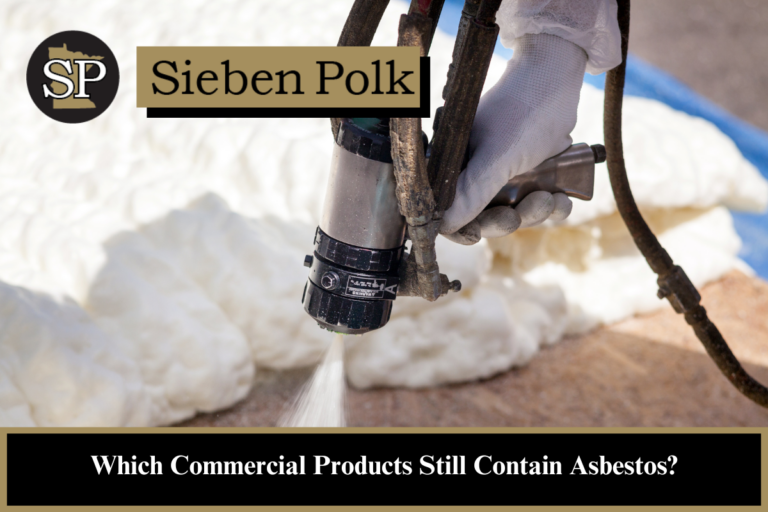With all the news about the dangers of asbestos exposure, you might assume that regulators have banned the dangerous substance from common use. After all, the Environmental Protection Agency has said that there is no safe level of exposure to asbestos.
In fact, the EPA has only banned a limited number of products for use in new construction and renovations, according to the Minnesota Department of Health. The banned asbestos-containing products include:
- Spray-applied surfacing material
- Sprayed-on materials containing more than 1% asbestos, unless they are encapsulated with a bituminous or resinous binder during spraying and, once dry, the materials are not friable
- Wet-applied or pre-formed pipe insulation and pre-formed asbestos block insulation for boilers and hot water tanks
- Corrugated paper, rollboard, specialty paper, commercial paper and flooring felt
- New uses of asbestos
Consumer & Aftermarket Asbestos Products
Here is a non-exhaustive list of consumer and aftermarket products available in Minnesota that commonly contain asbestos:
- Adhesives
- Appliance components
- Auto brake and clutch products
- Ceiling plaster, panels, popcorn texture spray, tiles and mastic
- Cement-asbestos board (Transite) products
- Chalkboards
- Electrical insulation, breakers, electrical panel arc chutes and partitions, electrical panels and insulating cloth
- Fire blankets, curtains and doors, along with spray-on fireproofing
- Heating and cooling system products such as insulation, heat shields, thermal taping compounds, cooling towers and vibration dampeners
- Elevator brake shoes and equipment panels
- Flooring tiles, mastic and linoleum
- Industrial beverage filters and friction materials
- Laboratory products, such as gloves, hoods, tables and countertops
- Paints and coatings
- Roofing products such as shingles, tar, felt and flashings
- Table pads
- Wall products like spackle, caulk, putty, joint compounds and sheetrock
- Window glazing
- Vermiculate tainted by asbestos, used in insulation, decoration and gardening products
Asbestos can also be found in other products, such as cosmetics, that are made of talc. Talc and certain other minerals are often located near asbestos deposits and can be contaminated by asbestos.
How Can I Be Safe?
Anytime you purchase a product, especially one for home renovation or automotive repair, you should check the label to ensure it doesn’t contain asbestos. The Health Department says that U.S. trade agreements allow asbestos-containing materials to be imported into the country.
If a product contains asbestos, it is best not to use it at all. If there is no other option, consider hiring a licensed contractor to apply the product. A reputable contractor will take steps to limit the possibility of exposure. If you’ve developed an asbestos-related disease after using one of the products listed above, a Minnesota asbestos attorney at Sieben Polk P.A. can help you determine your sources of exposure and potential compensation options.
Many people have vermiculite insulation in their homes. It was a popular form of loose insulation used to insulate many homes throughout the United States. Used extensively in colder climates such as Minnesota, Wisconsin and the Dakotas, it was most often used as attic insulation.
Vermiculite is a mineral product known for its heat and fire-resistant properties. These qualities made it ideal for many different types of building products, including insulation, but it also contained hidden dangers.

